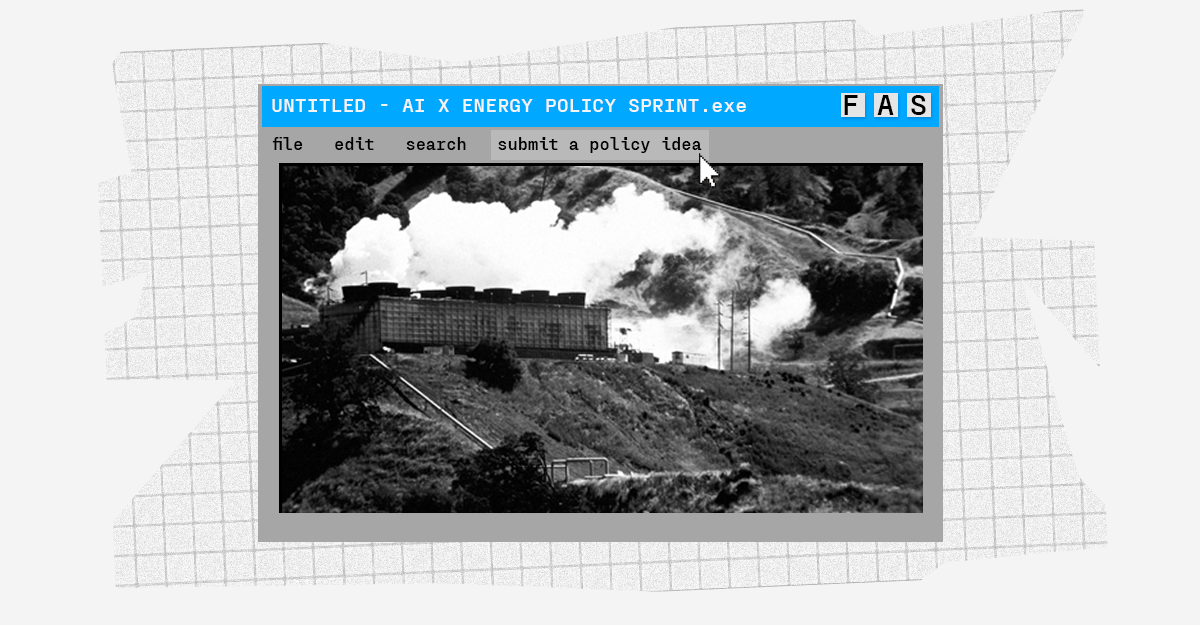
AI & Energy Policy Sprint 2025
As artificial intelligence reshapes the landscape of innovation, its impact on the environment and the energy sector is rapidly evolving. From using AI to optimize power grids to accelerating clean energy R&D, AI holds huge potential, while also introducing new challenges related to climate, equity, infrastructure, security, and sustainability.
The AI & Energy Policy Sprint convenes a diverse cohort of experts from industry, academia, and think tanks to generate actionable policy ideas at the intersection of AI and energy. Over the course of the sprint, participants collaborated to produce a series of policy memos that offer practical policy solutions for this fast-evolving space.
Each memo reflects interdisciplinary insights and is designed to inform near-term action—whether through executive action, legislative strategy, agency leadership, or cross-sector partnerships. Together, these ideas address questions such as:
- How can we leverage data centers to help coal communities?
- What regulatory or governance frameworks are needed to manage the energy demands of large-scale AI systems?
- What roles should public-private partnerships play in shaping AI’s impact on the U.S. energy landscape?
- How can we ensure that AI data centers do not create water shortages and other environmental harms?
- How can we create a standard metric to measure the impacts of data centers?
We invite you to explore the full collection of memos below—and to join us in shaping policies that ensure AI advances the public good in energy and beyond.
Inconsistent metrics and opaque reporting make future AI power‑demand estimates extremely uncertain, leaving grid planners in the dark and climate targets on the line
Federal and state governments need to ensure that the development of new AI and data center infrastructure does not increase costs for consumers, impact the environment, and exacerbate existing inequalities.
As AI becomes more capable and integrated throughout the United States economy, its growing demand for energy, water, land, and raw materials is driving significant economic and environmental costs, from increased air pollution to higher costs for ratepayers.
Without robust transparency and community engagement mechanisms, communities housing data center facilities are left with little influence or recourse over developments that may significantly affect their health and environment.
Surging energy demand and increasingly frequent extreme weather events are bringing new challenges to the forefront of electric grid planning, permitting, operations, and resilience.
Many of the projects that would deliver the energy to meet rising demand are in the interconnection queue, waiting to be built. AI can improve both the speed and the cost of connecting new projects to the grid.
The decline of the coal industry in the late 20th century led to the dismantling of the economic engine of American coal communities. The AI boom of the 21st century can reinvigorate these areas if harnessed appropriately.